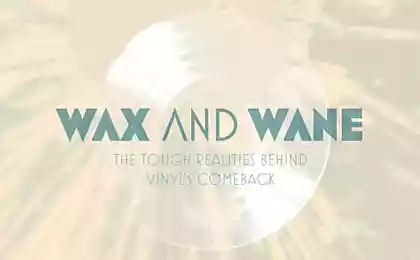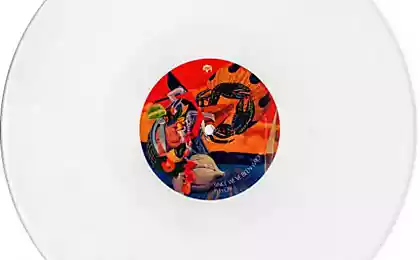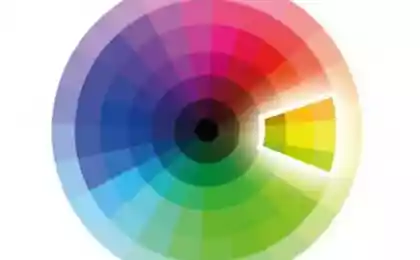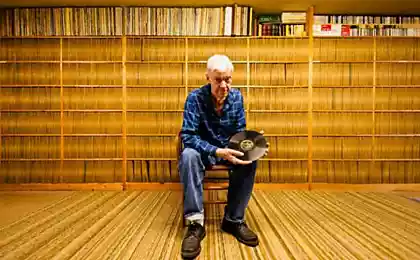Vinyl and CD: the flavor and color
In the address ежегодного honoring vinyl receive many complaints related to matters of business, but it's nothing compared with the spirit of the day, which encourages people to explore and buy new music. Further, as the vinyl more attractive, than MP3 or CD. Something inside rejoices when the needle is lowered onto the plate, or you hand cranked it to rewind. In a world where the party anyone can change the playlist and put your favorite music, nice to have a format that is not so easy to replace.
However, let's not kid ourselves. Vinyl - this is a great music format, but the idea that it sounds better than uncompressed digital sound recordings in itself absurd. The bottom line is that they sound different, that's all. B>
Why can not vinyl h4> From the point of view of the theory there are no reasons why vinyl should sound better. When recording music on vinyl records (in video perfectly explains some difficulty mastering vinyl) should be considered a number of features, one of which is a method of encoding a sound that has no equivalent on CD. Also, vinyl limited by material properties, but it must reproduce the entire spectrum of the sound wave without causing distortion. This condition limits the dynamic range of sound - in other words, the range of frequencies that you can hear.
If you write too low notes, it would mean that on the plane of the plate, place an entry of shorter duration. If the audio tone is too high, then the distortions as to create an appropriate track will be very difficult. Therefore, engineers when creating a master disk for vinyl records often cut too high or low frequencies, using various methods , each of which affects the sound of music .
For example, a simple example of high frequencies on the record are interfering with the pronunciation sizzling consonants or consonant "s" or "z", which may at fast pronunciation create the effect of a whistle (for example in the words: «zip», «shack», «sap "). This creates serious problems for professionals working with vinyl, so they are often forced to remove excess treble on the record, making whistling sounds less pronounced in the editing process, or ask for vocalists to say the problem space in a different way in the recording process.
Audio processing techniques to eliminate too high frequencies are widely used for other recording formats, but when recording a vinyl they are vital. If you intend to keep the loud hiss for any aesthetic idea, and want to make a vinyl record with such a record, then you're out of luck. When it is necessary to get rid of the high frequencies, overwriting the vocals, it can greatly affect the sound. Singers have to perform songs less "strong", and as a result - lost expression level.
What CD h4> 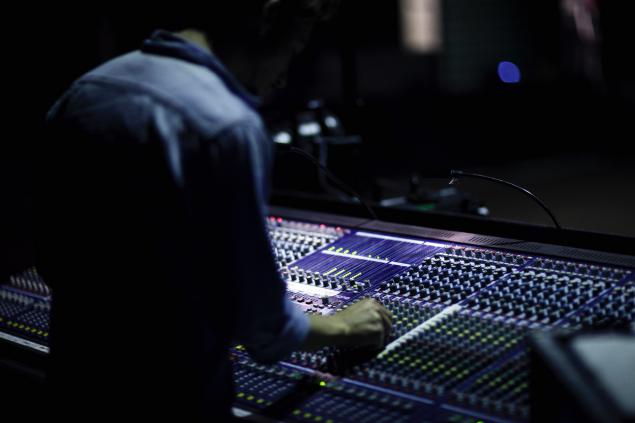
The sound technician for audiokonsolyu mixes the sound. Denmark, 2011. Photos by PYMCA / UIG / Getty Images i>
Because the format of CD - is the original analog audio signal, which has undergone a sample, it has some limitations in frequency. Vinyl records, in theory, just encode smooth audiovolnu, CD also measures the value of an analog value at certain time intervals at various points, and then combines them. "No matter how high sampling rate - as a писал Eliot Van Buskirk (Eliot Van Buskirk), an employee of the magazine Wired, - all information submitted by the analog recording, encode impossible ».
Saying Eliot Buskirka generally true: as CD-format works - selects a set of samples from the original audiovolny and arranges them in series. But such a view is wrong for two reasons. Firstly, when creating vinyl records errors, due to which the obtained track is not compressed replica audiovolny recorded on the master disc, and the latter are the cause of this frequency limit. The truth is that the CD can not accurately recreate audiovolnu reference (in most cases can not - Nyquist-Shannon sampling theorem states that this is possible), but also a vinyl record can not this, too.
Even more important is the fact that the volume of the sample should be sufficient to create a copy of which the human ear can hear, as if an original recording. The sampling frequency in the format of CD-44, 1KHz - this means that the reference values are read record 44,100 times per second in the audio frequency range 20kHz - a limit human hearing. At least one experiment confirmed , that listeners do not notice the difference between records, which have frequencies 21kGts above and those that do not contain such. You may think that they can hear frequencies that are not supported format CD, but most likely it is not.
After some time, engineers figured out how to squeeze more out of 44, 1 kHz. Metkalf Scott (Scott Metcalfe), Head of the Department of Arts and Sciences at the Institute for recording Peabody at Johns Hopkins University, explains that engineers began to use "oversampling" when creating digital files, the frequency of which is much greater than 44 Hz, 1 kHz. Then the record is compressed back up to the frequency of CD-format. "The signal is captured at a much higher sampling rate, which is then by means of mathematical transformation to the frequency of 44 Hz, 1 kHz, - says Metkalf - it allows you to accurately preserve the recording information."
Metkalf spoke about another problem with the incoming criticism of CD-format. Even if the method used record supports frequencies above 20 kHz, it is useless if you do not have a microphone that can record such frequency, and there is no speaker, who would play them. Most studios do not have microphones that are sensitive to the frequencies above 20 kHz, and the dynamics of their reproducing, there is even scarcer. In fact, most audio systems are equipped with a low pass filter, which cuts all frequencies above this. The fact is that the CD-format capable of creating more accurate copy of the sound waves than vinyl.
And what people prefer? H4> 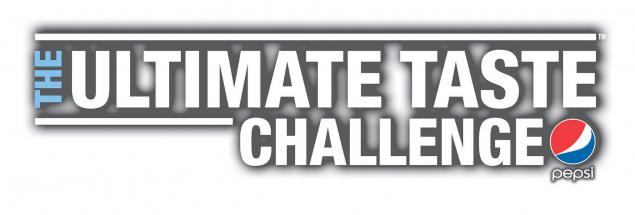
It is a pity that you can not hold a competition between CD and vinyl by analogy with Pepsi and CocaCola. Owner of the image Pepsi i>
Known fact: Americans покупают digital copies of songs in much greater numbers than other alternative music formats. In this regard, one can assume that they prefer, or digital music CD, and not vinyl. If you calculate the sales of albums as well as songs, it turns out that last year (2013) has sold 243, 5 million. Digital albums, 165, 4 million. Albums released on CD, and 6, 1 million. Vinyl records. Given that the compressed digital sound much worse in quality than a CD or vinyl, it is clear that consumers are more concerned about the convenience purchase and use than the sound quality
But compare the CD and vinyl a bit wrong, because different people understand by the word "convenience" is different. You can not fit a thousand songs on vinyl in your pocket and listen to them for a jog. But what if you compare digital and analog audio at equal, controlled conditions?
Unfortunately, no test was carried out to compare vinyl and CD, but there are effective experiment John Gerindzhera ( John Geringer) and Patrick Dunnigana (Patrick Dunnigan) from the state of Florida, which compared high-quality CD and cassette recordings. Although tape sold to buyers and have the worst sound quality than vinyl records to tapes is not subject to special requirements during production, and the format does not suffer from the limitations of frequencies that imposes vinyl format to avoid zvukopoter. Of course, this experiment is not quite suitable for use in this context, but an understanding of how people perceive high-quality analogue to digital sound, should be useful in the framework of this material.
Gerindzher Dunnigan and use the same microphones and mixing consoles settings to record 4 different concert, using high-quality digital recording and analog cassette recorder (model MR-3 brand Nakamichi widely known among music lovers). Then they asked 40 subjects to listen to the recording. Participants were allowed to use headphones and PC Speaker at any time to switch between digital and tape recordings. The subjects did not know what the record is digital, and what - analog. Then they were asked to write about the choices they have made.
As it turned out, most inclined in favor of digital recording. "The subjects were given a much higher quality assessment of low and high frequency digital recording," - reported Gerindzher and Dunnigan. The evaluation results of digital recordings were worse on some points (record string orchestras were practically the same) compared with analog records, but their average score is always higher than the average score of analog. Most decent analog records were excluded from the experiment because these records do contain such music genres that were not to the taste test. However, there were also a few people showed a marked preference for "Numbers" (regardless of genre).
Why did people like vinyl? H4> 
Enthusiasts quickly scan the box with vinyl records on the opening day of the annual fair recording conducted by the non-profit radio station WFMU in Jersey City (November 22, 2013, New York). Photos of Spencer Platt (Spencer Platt) / Getty Images i>
Perhaps the most remarkable in the sound of vinyl is exactly what the plate alter the sound of the original recordings. Many fans say "warm" sound of vinyl, especially at low frequencies. But, in the words of Mark Richardson (Mark Richardson), a journalist of the electronic publication Pitchfork: «That" warm "sound that many people associate with vinyl records, can be described simply as messy recorded bass." Difficulties in accurate reproduction of bass on vinyl due to the fact that the groove should not be too large, so engineers have to prodelyvat many complex operations to change the bass sound to the record sounded normal that apparently had masses to taste.
The so-called "heat" is also the effects arising due to defects players. Stanley Lipschitz from the University of Waterloo once told the magazine Popular Science, the sound dynamics and fluctuations in the height of the needle can cause vibration in the sound recording that the needle reads and plays as a supposedly "warm" sound.
Is it considered wrong to love this "warm" sound? Of course not! It would be absurd to judge it as a genuinely correct assessment of aesthetic taste. It's like a detuned strings to blame for the fact that they "do not correspond to the" sound-tuned guitar. Sound distortion can be beautiful, and there is nothing wrong to love them. But it is also important to mention that it was because of this "warm" sound different from vinyl records sound recorded musicians in the studio.
«As recording engineer, I can say that when working with digital formats you get exactly what was originally planned - explains Metkalf. - But when you work with analog sound, the result may be different from the initial settings ». Blockquote>
Do I have to stop listening to vinyl? H4> No! For heaven's sake, no. Each format has its own particular charm , and all their differences as often overlap quality recording equipment, playback devices and approach to recording. But if you collect records, you should not constantly repeat your friends about how much cleaner sound vinyl. First - it is absolutely swinish behavior, but more importantly, it's a lie. Digital recording much accurately reproduce the sound wave. It's not only thought, on which it is worth considering, but it shows the inadequacy of the arguments of some adherents of vinyl.
[Audiomanii We take into account all the nuances of taste and preferences of customers, providing a wide range of high-quality audio:]
I> Turntables Vinyl Records CD players Vneshnie DACs i> are your views on various comparisons formats?I think that such comparisons help to determine the choice of audio I am sure that in comparison (CD and vinyl) is not much point - the taste and color, as they say I read such comparisons for fun - try to learn the subject sound from different directions I prefer to sink into the materials selected topics according to their interests Voted 219 people. 39 people abstained. Only registered users can vote in polls. Sign , please.
Source: geektimes.ru/company/audiomania/blog/243941/



